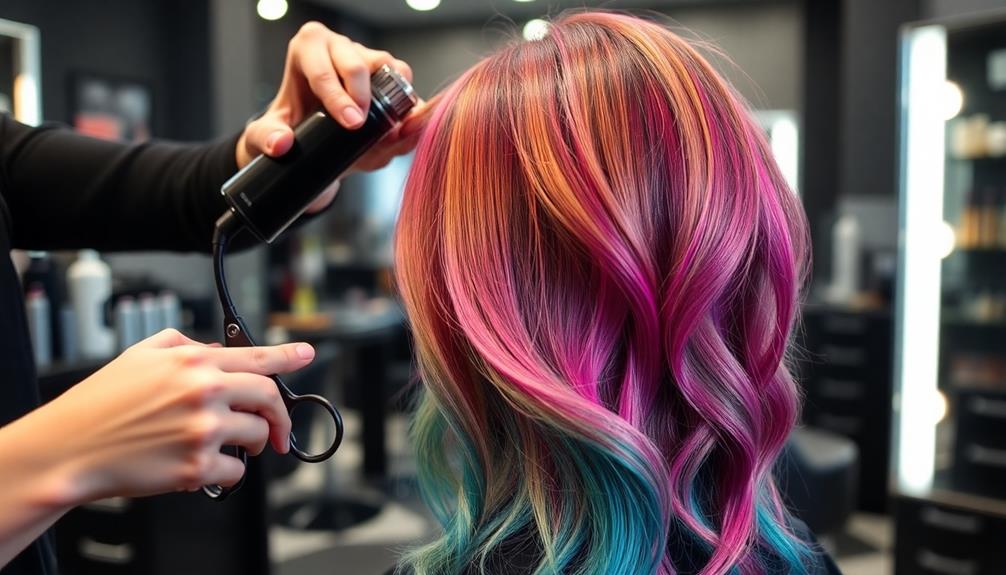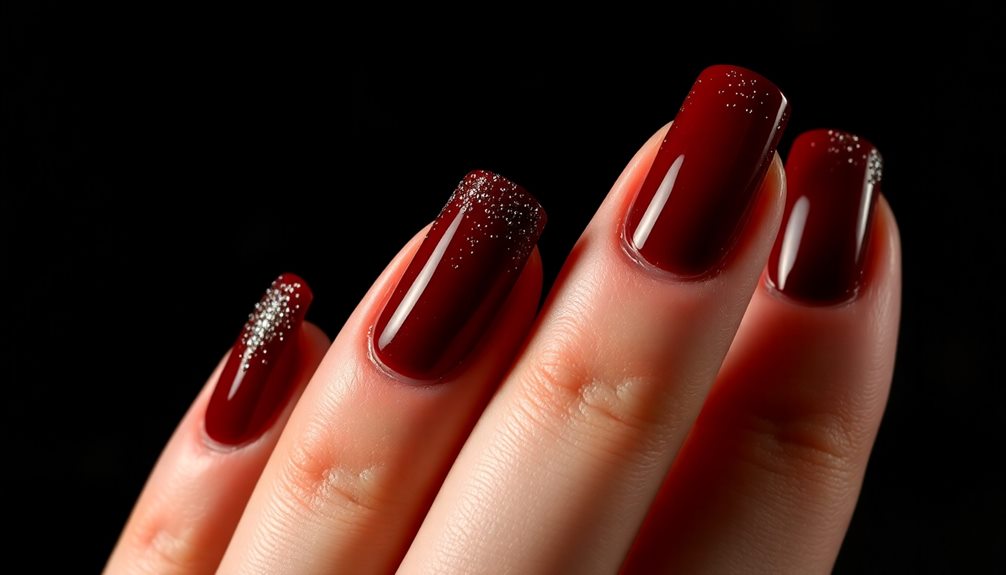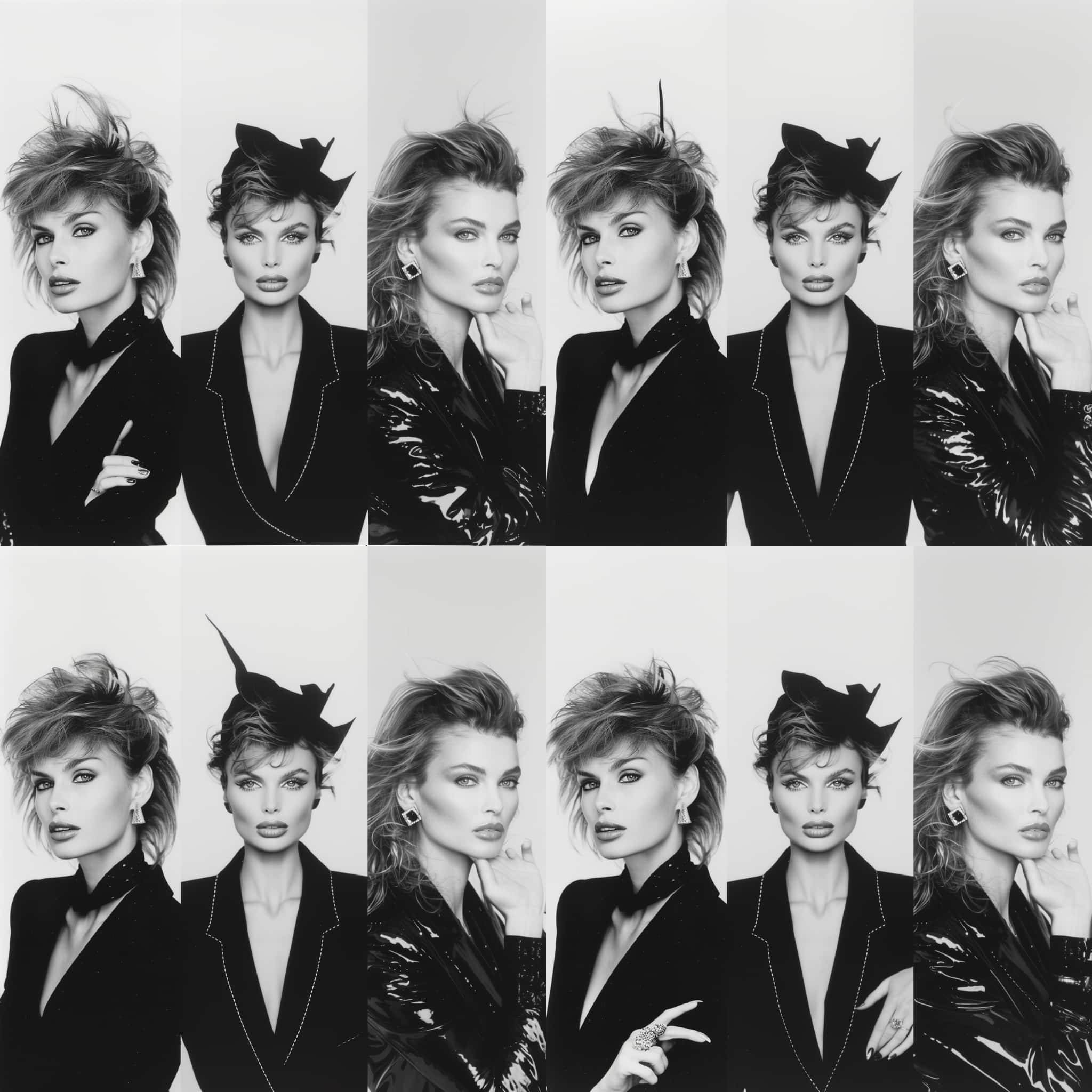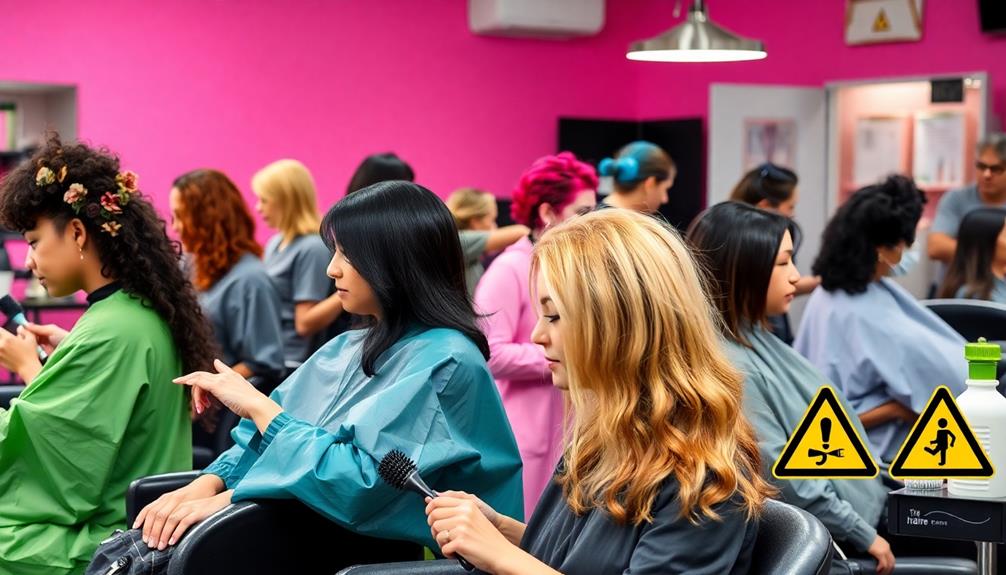Mastering hair texturizing techniques can truly elevate your style and volume. Start by understanding your hair type, whether it's fine, medium, or thick, as this influences your approach. Use the right tools like thinning shears and high-quality scissors for precise cutting. Techniques like point cutting and slithering will create the perfect texture while maintaining length. For straight hair, focus on soft layering, while curly hair benefits from vertical elevation cutting. Finally, keep up with regular trims and select appropriate products to maintain that gorgeous texture. There's a lot more to explore to achieve the ideal hair look you desire!
Key Takeaways
- Understanding hair texture is crucial for selecting suitable texturizing techniques tailored to different hair types, such as fine, medium, and thick hair.
- Utilize tools like thinning shears, razors, and high-quality scissors for precise texturizing without compromising hair integrity.
- Techniques like point cutting and slithering add volume and movement, while weaving and chipping manage bulk effectively.
- Regular trims every 6-8 weeks maintain healthy texture, prevent split ends, and enhance overall hair vibrancy.
- Choose lightweight volumizing products for fine hair and layering products for thick hair to achieve desired texture and definition.
Understanding Hair Texture

Understanding hair texture is essential for achieving the best results in styling. Hair texture refers to the natural shape and pattern of your strands, which influences how your hair behaves and responds to different texturizing techniques. Just as different skin types require specific treatment methods, recognizing your hair texture allows for tailored styling approaches, like how effective blemish treatment can vary based on the type of acne.
Whether you have fine hair, medium, or thick hair, each type requires a unique approach to make the most of its natural movement. When you recognize your hair texture, you can customize styles that highlight your features and preferences.
For fine hair, you might focus on volumizing products and light texturizing techniques to avoid weighing it down. On the other hand, thick hair can benefit from techniques that enhance its natural body while ensuring it's manageable and stylish.
Understanding these differences allows you to choose the right products and methods, enhancing your hair's natural beauty. By tailoring your approach based on your specific hair type, you can achieve a look that feels uniquely yours.
Tools for Texturizing
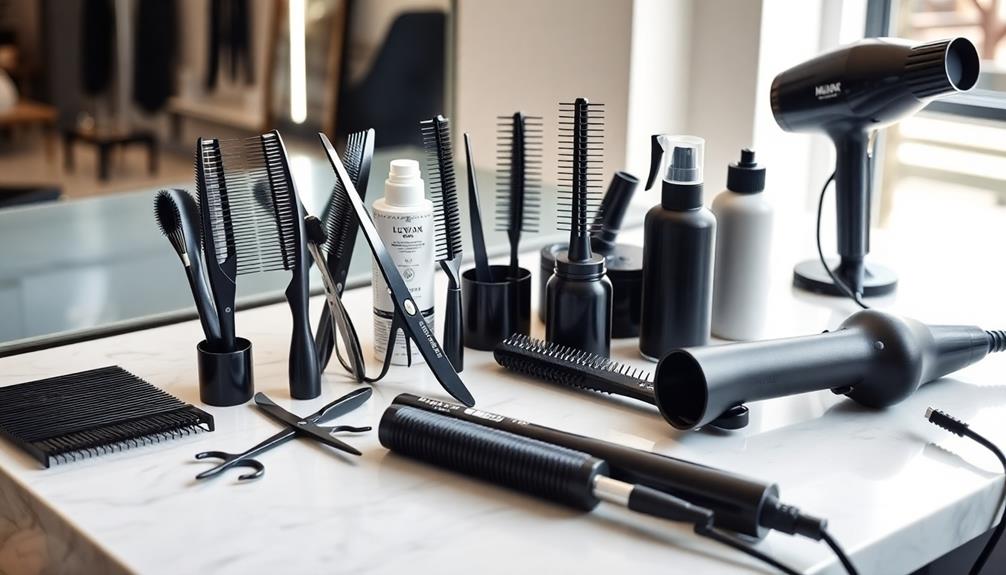
When it comes to texturizing hair, having the right tools makes all the difference. Start with high-quality haircutting scissors, which are crucial for precise cutting. These should be smaller and sharper than regular scissors to guarantee clean lines when you texturize.
Additionally, consider using best automatic hair curlers for effortless styling after texturizing. Next, invest in thinning shears. These are designed specifically to reduce bulk in thick hair, allowing you to maintain length while achieving a lighter feel.
Razors can also be beneficial for creating a soft, lived-in texture, but be cautious—over-texturizing can occur if you're not careful.
Combs are essential tools for sectioning hair before you begin, making sure that each area is handled properly and that your texture remains even and balanced throughout.
Techniques for Adding Texture
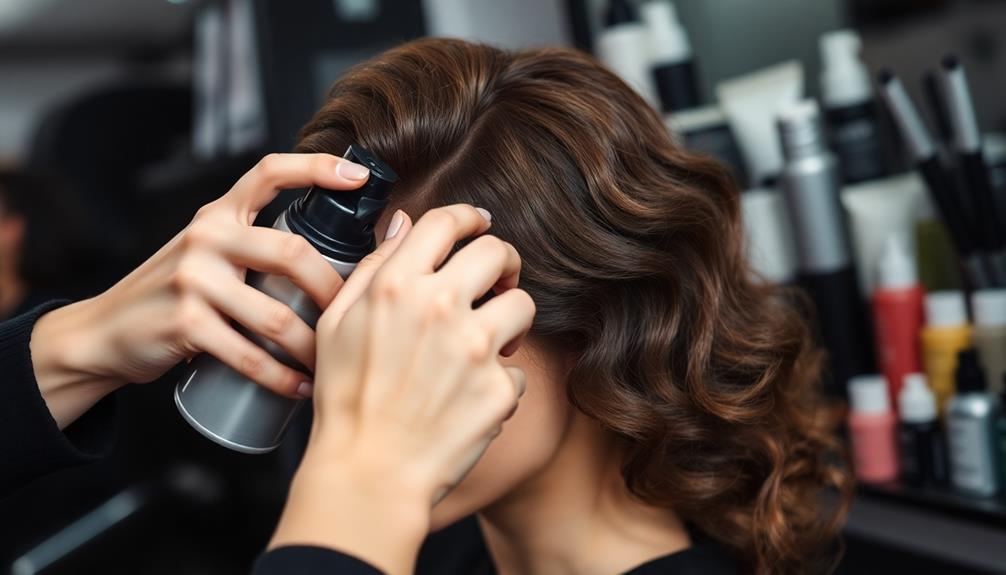
Point cutting involves cutting small sections of hair vertically, creating a smooth, texturized finish that eliminates blunt ends and adds movement.
If you're working with thick hair, slithering is your go-to; it thins the hair by sliding scissors from mid-length to the ends, allowing for a lighter feel without sacrificing length.
For those looking for affordable salon options, community salons often provide skilled stylists who can help achieve these techniques at budget-friendly prices affordable options for haircuts.
For a balanced texture, weaving uses a tail comb in an M-shaped motion to remove bulk evenly.
Chipping is great for managing thickness; it cuts into the hair to eliminate excess bulk, promoting a more controlled look.
Texturizing Straight Hair
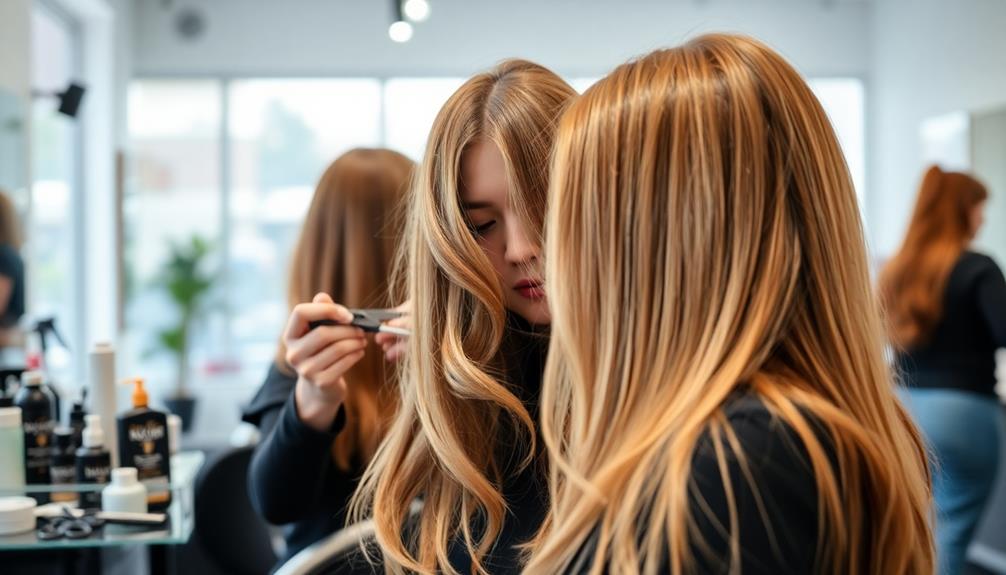
For straight hair, texturizing techniques can transform flat locks into styles full of volume and movement. To achieve this, start by using over-direction techniques while cutting face-framing layers. Elevate the hair above the face to guarantee the layers remain soft and seamless.
Avoid blunt cuts, as they can lead to dullness; instead, incorporate point cutting and slithering techniques to enhance the natural flow of your straight hair. Utilizing the right products, such as top hair products for men, can further elevate your styling game and add the necessary texture and hold.
Thinning shears are your best friend when it comes to creating texture without leaving noticeable lines. Weave through the hair gently with reversible blending shears, confirming you maintain a balanced look by applying texturizing techniques symmetrically on both sides of your head.
This consistency in your style will keep everything looking polished and well-structured. Regular trims paired with your texturizing efforts will help maintain the health of your straight hair, preventing split ends and promoting a vibrant appearance.
Texturizing Curly Hair
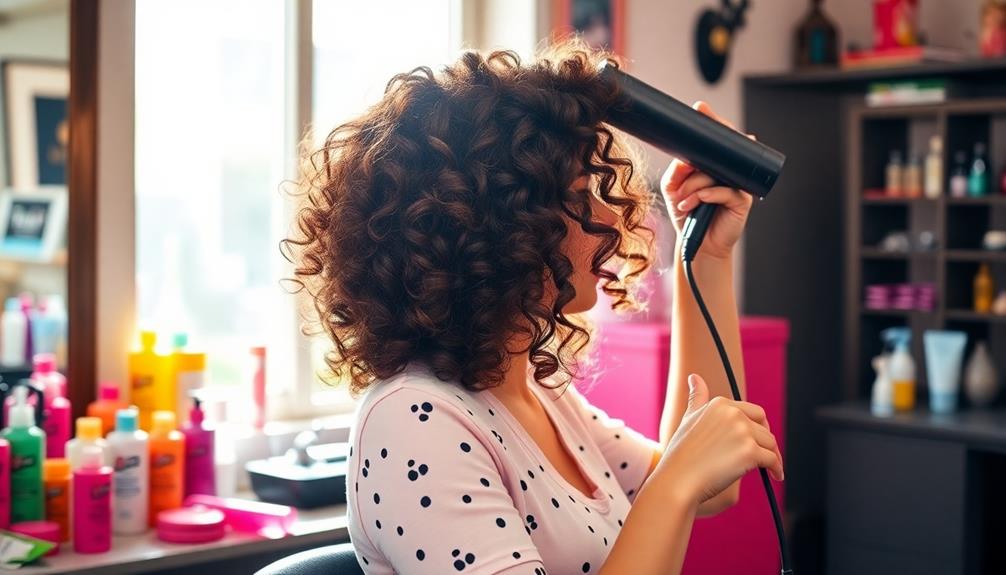
Texturizing naturally curly hair can elevate your curls by enhancing volume while preserving weight and length. The key is to use specific techniques that maintain your hair's natural texture. Start by cutting the hair at the crown with vertical elevation. This method encourages bounce and fullness without sacrificing length.
| Technique Used | Description |
|---|---|
| Vertical Elevation | Cut at the crown for enhanced volume |
| Weaving Technique | Adds texture without losing bulk |
| Standard Shears | Maintain curl pattern and density, avoid frizz |
| Dry Cutting | Assess curl pattern accurately, avoid shrinkage |
Avoid over-texturizing your curly hair; it can lead to unwanted frizz. Instead, use standard shears rather than thinning shears to keep your curls intact. After cutting the hair, comb back over the detached sections to see the volume increase and guarantee the curls bounce back to their natural shape. By following these techniques, you can effectively texturize hair, enhancing your curly locks while keeping them healthy and vibrant.
Texturizing Blonde Hair
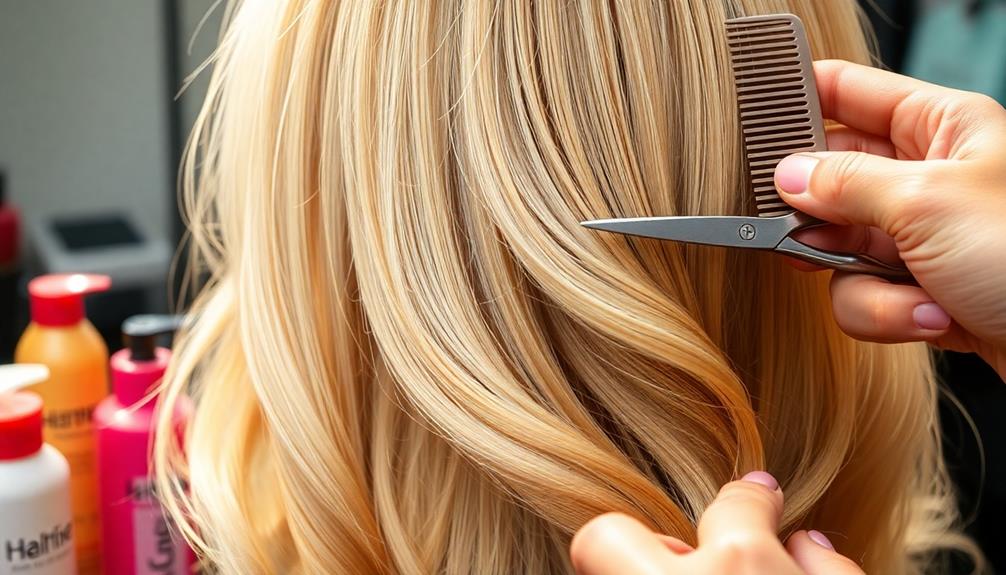
Often, achieving the perfect texture in blonde hair requires a careful approach due to its lighter color and finer strands. Precision is essential when using texturizing techniques because mistakes can be more noticeable than on darker hair.
To create a stunning, textured look, consider the following techniques: Incorporating a quality vacuum can help maintain a clean salon environment, ensuring that hair clippings and products don't interfere with your work. best value vacuum cleaners are a great investment for stylists.
Use vertical or diagonal shear angles for a softer, more natural texture. Apply texturizing spray to enhance volume and definition. Elevate the hair vertically when cutting to correct any texturizing mistakes seamlessly. Alternate cutting techniques on both sides of the head for balanced movement.
Schedule Express Services for quick trims to maintain vibrancy and health.
Hair Care Tips for Texture
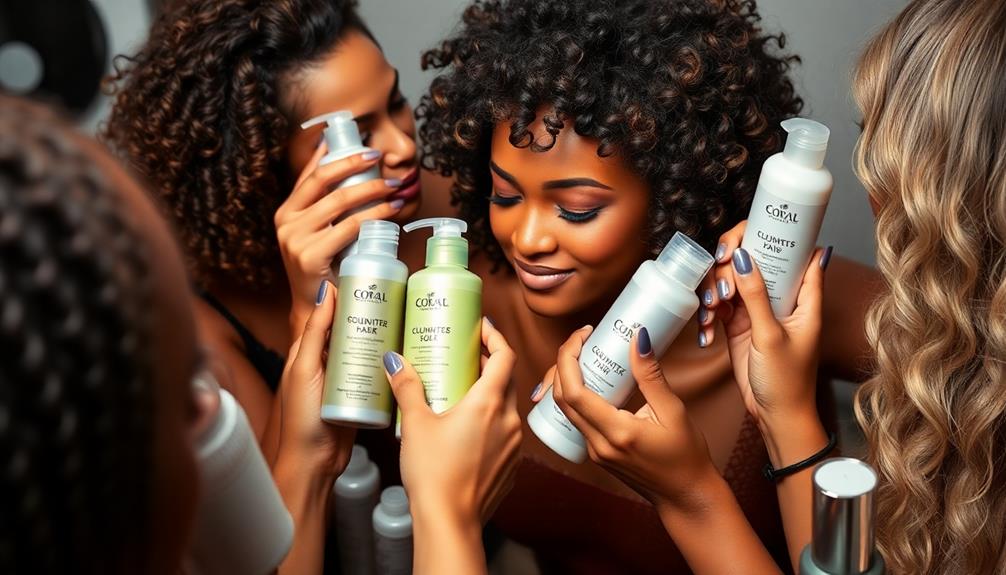
To keep your textured hair looking its best, regular trims are a must to eliminate split ends and encourage healthy growth.
Emphasizing relaxation before styling can also enhance your hair's appearance, similar to how sleep influences vibrational state.
Choosing the right products can make a huge difference, so opt for hydrating shampoos and conditioners that cater to your hair's needs.
Don't forget to use heat protectants when styling to shield your locks from damage and maintain their integrity.
Regular Trims Importance
Maintaining healthy, texturized hair requires regular trims, which play an essential role in keeping your style looking fresh.
Regular trims not only remove split ends but also prevent further damage, ensuring your style lasts longer. Using quality hair styling products like best hair styling gels can also enhance your textured look and provide added support.
Scheduling trims every 6-8 weeks helps keep your textured layers defined and prevents the buildup of bulk that can weigh down your hair and diminish volume.
Consider these key points for maintaining your hair:
- Remove split ends to promote overall hair health.
- Schedule trims every 6-8 weeks to keep layers fresh.
- Prevent bulk by trimming, ensuring your hair maintains its natural shape.
- For curly or wavy hair, regular trims help define your curl pattern and enhance volume.
- Consistent haircuts allow your stylist to assess how your hair responds to texturizing techniques.
Product Selection Tips
When selecting products for textured hair, it's vital to choose formulations that complement your hair type and desired style. For fine hair, opt for lightweight volumizing products like mousse. These products enhance texture and lift without weighing your hair down.
If your hair is medium, consider using curl-enhancing creams or sea salt sprays to boost natural waves while achieving a tousled look without heavy buildup. Additionally, be cautious with ingredients that may affect hair health, similar to how certain foods can impact pets, such as dangers of raisins for dogs.
For those with thick hair, layering products such as serums can control frizz and add definition, making sure your texture remains manageable and stylish. Always remember to apply a heat protectant before using any hot tools. This step is vital to prevent damage and maintain the integrity of your texturized styles.
When working with texturizing tools, section your clients' hair into thin sections to guarantee even product distribution and styling.
Regularly assess the effectiveness of the products you use, adjusting based on how your hair responds. This practice helps you achieve the best results while maintaining both the desired texture and health of your hair.
Heat Protection Strategies
Applying the right products is just the beginning; protecting your hair from heat damage is equally important. Before using any styling tools like curling irons or flat irons, always apply a heat protectant spray or serum. This step minimizes damage and maintains your hair's integrity.
Choose heat protectants that include ingredients such as silicones or oils, which create a barrier against high temperatures while ensuring moisture retention. Additionally, consider incorporating herbal teas into your routine for their antioxidant properties, which may help improve overall hair health and shine; for instance, popular herbal teas like ginger and chamomile can be beneficial.
To effectively protect your hair, consider these strategies:
- Limit heat styling to a few times a week.
- Adjust heat settings based on your hair type; lower temperatures for fine hair and higher for thicker, coarser hair.
- Incorporate hydrating products like leave-in conditioners or deep conditioning masks.
- Apply your heat protectant evenly on damp hair for the best results.
- Allow your hair to recover by using heat-free styling methods when possible.
Frequently Asked Questions
How to Texturize Hair for Volume?
To texturize hair for volume, you can use vertical cutting techniques at the crown, weave with shears, and point cut ends. Follow up with volumizing products for lasting lift and regular trims to maintain fullness.
What Are the Techniques for Texturizing Hair?
Ever wondered how to achieve that effortlessly tousled look? You can use techniques like point cutting, slithering, weaving, chipping, and twist cutting. Each method adds unique texture, movement, and volume to your hair.
What Are the Different Types of Hair Texturizing?
When you're looking to texturize hair, consider techniques like point cutting, slithering, weaving, chipping, and twist cutting. Each method offers unique benefits for enhancing movement, reducing bulk, and achieving that perfect, tousled look.
How Do I Style My Hair to Look Textured?
Think of your hair as a canvas waiting for artistry. To style it textured, you've got to embrace products like mousse and sea salt spray, letting your creativity flow for that effortlessly chic, tousled look.
Conclusion
In the world of hair, texturizing is like adding brushstrokes to a canvas, bringing depth and character to your style. By understanding your hair's unique texture and using the right tools and techniques, you can create volume and movement that truly reflects your personality. Whether your hair is straight, curly, or blonde, these texturizing methods will help you achieve that effortless, stylish look. Embrace your hair's potential and let it shine with texture!
